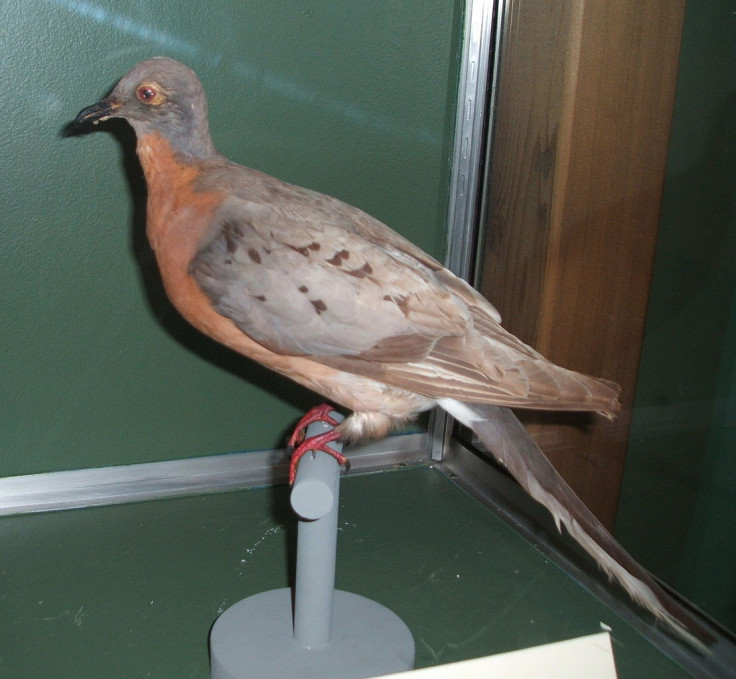Geneticists to Raise Extinct Passenger Pigeon from the Dead

A group of geneticists are hoping to bring back to life the extinct passenger pigeon by using its museum-specimen DNA.
Revive & Restore is a non-profit organisation that aims to use genetics to "rescue" endangered and extinct species that went from billions to zero in just a few decades.
The Great Passenger Pigeon Comeback is the first project by the organisation to attempt to revive an extinct animal using museum-specimen DNA – if successful the technique could be used to bring back hundreds of other extinct species.
"The goal ... is to bring the passenger pigeon all the way back using the genome of the band-tailed pigeon and state-of-the-art genomic technology," Revive & Restore said.
"The genomes of the two birds will be compared in close detail, to determine which differences are most crucial. The data and analysis will begin with the process of converting viable band-tailed DNA into viable passenger pigeon DNA."
The passenger pigeon was chosen because they were hunted to extinction by humans in the early 1900s. It was one of the most abundant species in the world, with one flock spotted in Ontario in 1866 taking 14 hours to pass.
Some estimate 3 to 5 billion Passenger Pigeons were in the United States when Europeans arrived in North America.
When picking a species, the organisation said the de-extinction of the passenger pigeon was a "model species" at the "optimal middle ground of ease and difficulty".
"An extinct mouse would be an easy win for de-extinction, but it does not challenge us to produce the methods necessary to revive birds or reptiles," they said.

Experts have analysed the DNA of 12 passenger pigeons to try to assemble the full genomic code and are now looking for the most viable full genome sequencing candidate.
"We are now initiating research designs for the isolation and culturing of band-tailed pigeon primordial germ cells, which are necessary to perform the genome engineering to create passenger pigeons.
"This is expected to be the major limiting component of the project, both in terms of time and resources; however, experts in the field of avian biotech are currently developing success with similar work for several species beyond the chicken model."
The project comes as researchers show passenger pigeon populations fluctuated massively before their extinction.
Published in the Proceedings of the National Academy of Sciences, scientists used genomic and ecological analysis to show their numbers were not always abundant, making them vulnerable to human exploitation.
"[Findings suggest] that the passenger pigeon was not always super abundant but experienced dramatic population fluctuations, resembling those of an 'outbreak' species.
"Based on our results, we hypothesize that ecological conditions that dramatically reduced population size under natural conditions could have interacted with human exploitation in causing the passenger pigeon's rapid demise."
© Copyright IBTimes 2024. All rights reserved.






















